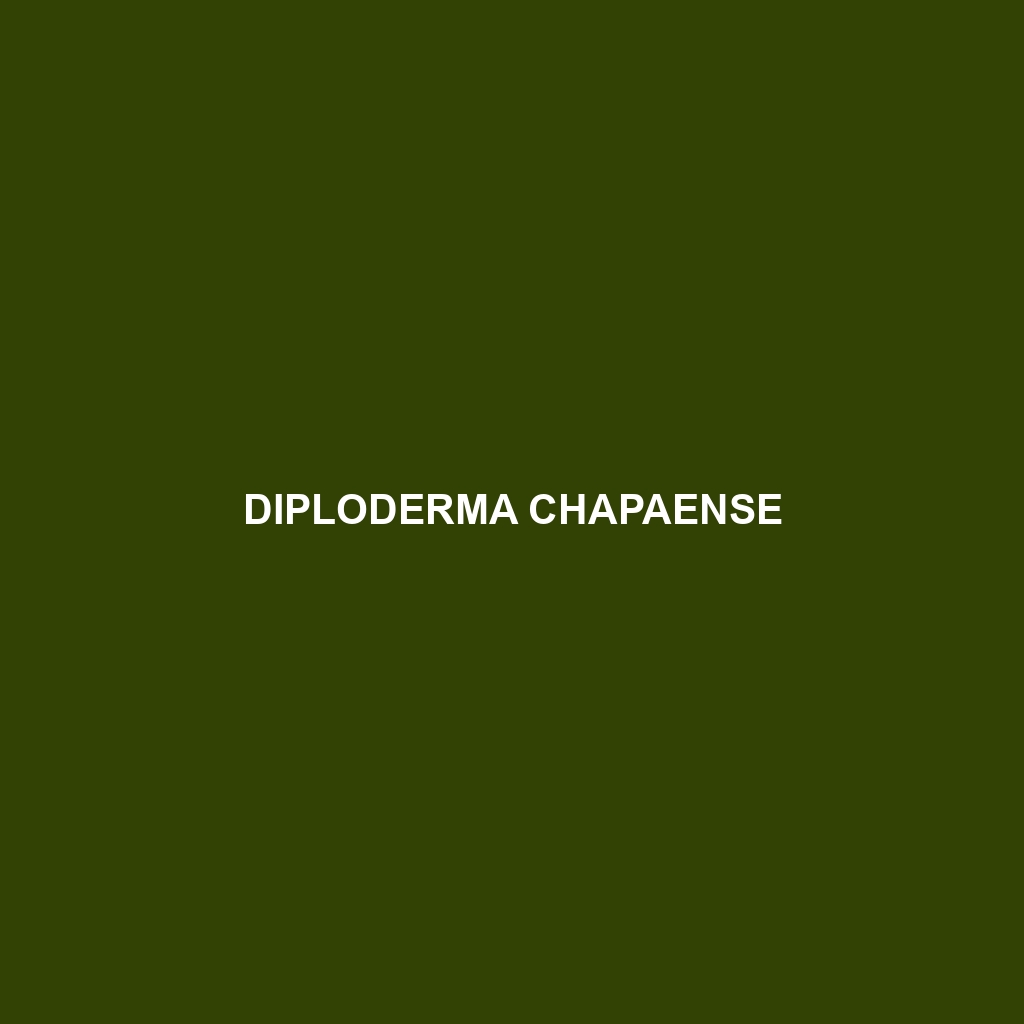Common Name: Diploderma chapaense
Scientific Name: Diploderma chapaense
Habitat:
Diploderma chapaense is primarily found in the mountainous regions of northeastern Vietnam, specifically in the provinces of Ha Giang and Cao Bang. This species thrives in humid temperate forests, characterized by rich biodiversity and a cool climate. The elevation of its habitat typically ranges from 1,000 to 2,000 meters, where it inhabits tree trunks and branches, making it well adapted to a life in arboreal settings.
Physical Characteristics:
Diploderma chapaense is a medium-sized lizard that exhibits a striking appearance. Adults typically reach lengths of 15 to 25 centimeters. This species features a robust body with a distinctive pattern of green and brown hues, allowing for effective camouflage among foliage. Notably, the presence of tubercles on its skin adds to its unique texture. Their elongated tails are often half the length of their bodies, providing balance as they maneuver through trees.
Behavior:
This lizard is primarily diurnal, engaging in active foraging during daylight hours. Diploderma chapaense displays arboreal behavior, often seen basking on branches or hiding among leaves to avoid predators. When threatened, it may exhibit a unique defensive posture that includes curling its body and puffing up to appear larger. These behaviors pique the interest of reptile enthusiasts and researchers alike, contributing to the species’ popularity in the study of lizard ecology.
Diet:
Diploderma chapaense is an insectivorous species, primarily feeding on a diet of various insects such as crickets, beetles, and ants. Additionally, it may consume small invertebrates, incorporating a wide range of protein sources into its diet. This lizard’s foraging habits contribute to maintaining the balance of insect populations within its ecosystem.
Reproduction:
The breeding season for Diploderma chapaense typically occurs between May and July, aligning with the warmer months. Females are known to lay clutches of 2 to 6 eggs in hidden locations among leaf litter or under logs. After an incubation period of approximately 60 to 90 days, hatchlings emerge, measuring around 5 to 8 centimeters in length, demonstrating rapid growth during their early stages of life.
Conservation Status:
Currently, Diploderma chapaense is listed as vulnerable by the International Union for Conservation of Nature (IUCN). Habitat loss due to deforestation, agricultural expansion, and habitat fragmentation are significant threats to its population. Conservation efforts are critical to ensure this species’ survival and to maintain biodiversity in its native habitats.
Interesting Facts:
- Diploderma chapaense was first described scientifically in 2001, highlighting its relatively recent recognition in the field of herpetology.
- This species exhibits color-changing abilities, which enhance its camouflage in response to various environmental conditions.
- Due to its limited distribution, studying Diploderma chapaense can provide insights into the ecological health of its native forests.
Role in Ecosystem:
Diploderma chapaense plays an essential role in its ecosystem as both a predator and prey. By controlling insect populations, this lizard contributes to the health of forest ecosystems. Additionally, it serves as a food source for larger predators, making it a vital link in the food web of its mountainous habitat.

